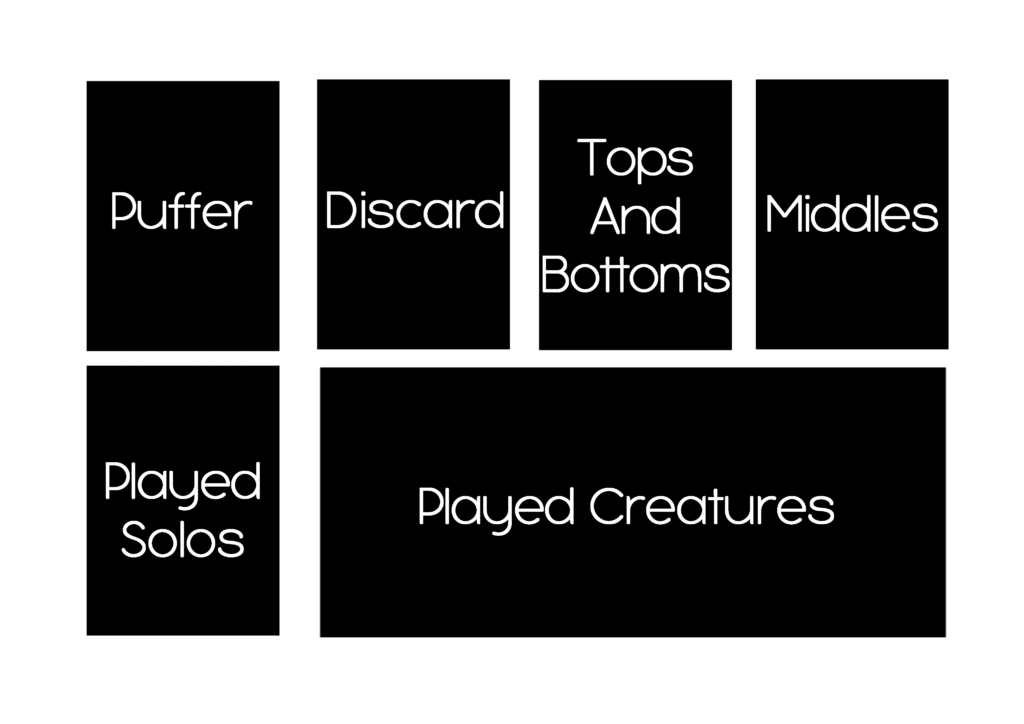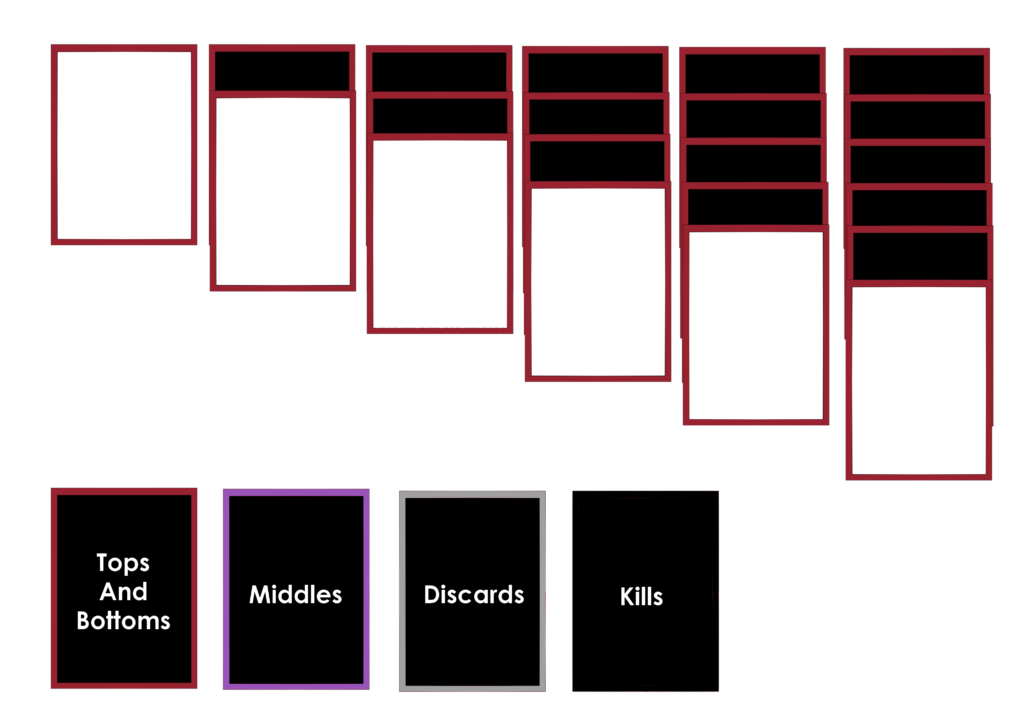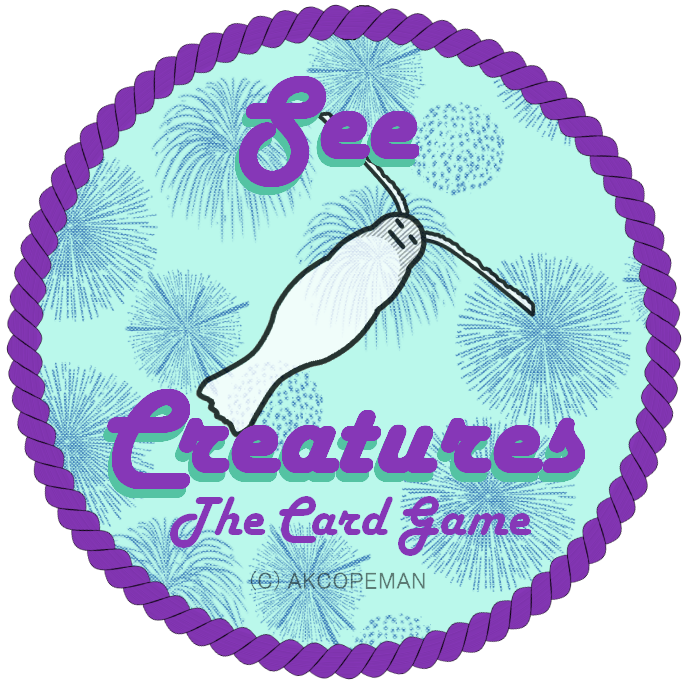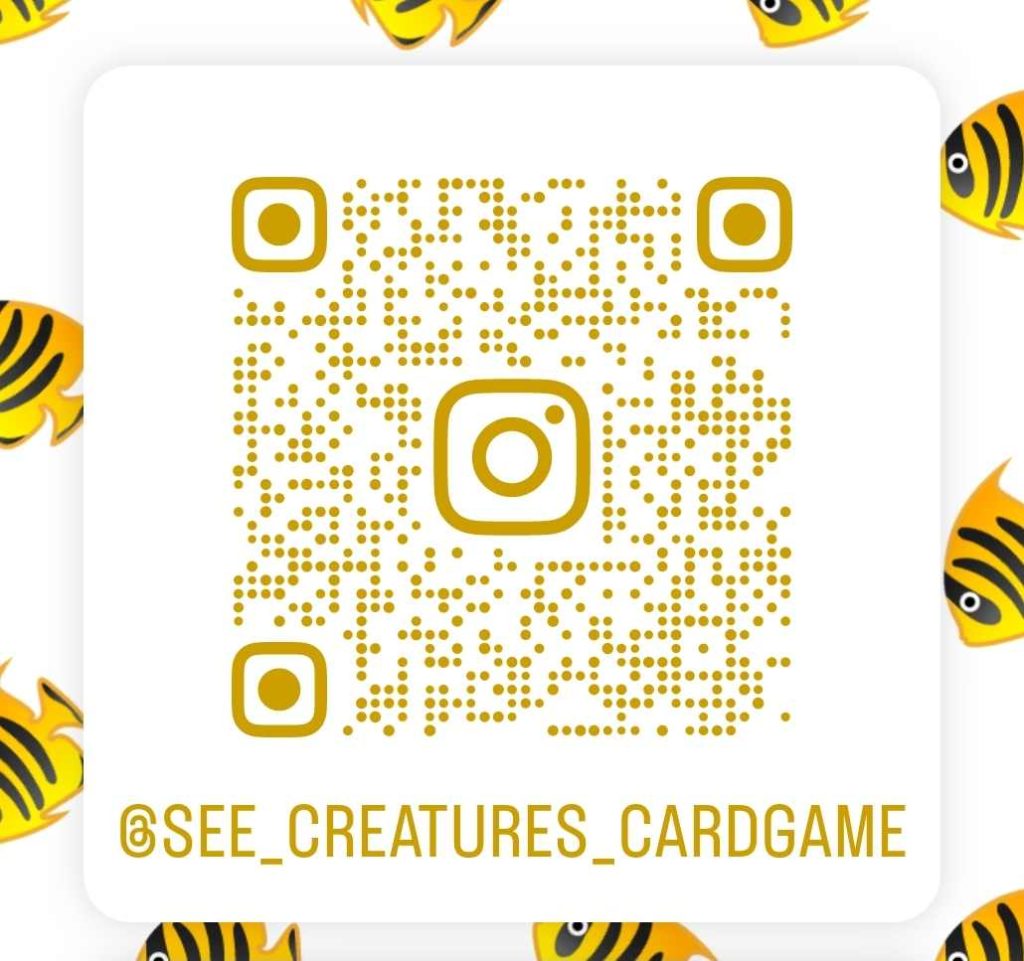Below are the instructions for See Creatures, for those who have lost their set or want to get a feel for the game before buying. I’ve provided a browser version for you to read instantly, with a PDF to download and/or print at home to come at a later date. I’m also working on a video for visual learners!
How To See Creatures
The aim of See Creatures is to end the game with as many points as possible, and to inconvenience the other players as much as possible, it can be played competitively with strategy or friendly for fun. TLDR below.
**********
TLDR:
- Deal 2 blue, 4 red, and 4 purple cards to each player. (Whale Falls and UFOs are added to the deck after the hands are dealt)
- Shuffle Atlantis and a Tunicate, return one blindly to the blues.
- Shuffle the solo cards into the red and purple decks.
- Players take turns drawing 2 cards per turn, instructions for creature effects are on the bottom of the cards. The number of each creature parts you need is on the top corners.
- Players can only have 13 cards in their hands.
- 3+ players only: discard one unwanted card to the next player, the others go onto the discard pile.
- At the end of the first deck, shuffle the discards and turn them over to keep going. Players usually only do this once.
- At the end of the final deck players can lay any complete creatures in their hand before counting up their final score.
********
Main Game
There are 3 types of card in See Creatures: Tops and Bottoms (red), Middles (purple), and Solos (blue), as well as the Poisoned Puffer (green).
Some cards should be removed for lower numbers of players, 2 Sonar Booms, Pearls, Tracking Tags, Volcanic Vents, and Sponges per player is a good ratio if you have extras, but keep or remove any cards you like to suit your playing style. The Dolphin Deck is designed for 1 – 3 players, the Whale Deck accommodates 3 – 6. See the end of the instructions to learn how to play See Creature Quickfire and solitaire. Quickfire is recommended as a good way of getting used to the mechanics before playing a long-form game.
Begin the game by dealing the hands before Whale Falls, UFOs, and Atlantis are shuffled into the blue deck, to avoid confusion. Players start with 10 cards: 2 Blues and 4 from both Reds and Purples. At this point, shuffle Atlantis with the extra Tracking Tag and add one blindly to the blues cards which are then halved and shuffled into the other two decks.
Players must determine who goes first amongst themselves.
Players take turns drawing two cards, when you are ready to start laying creatures you may play as many pointed solo cards as you like or one complete creature per turn before drawing further cards from the decks, solo cards that don’t give points can be played during any of your turns as well. Played cards must be displayed on the table (or floor, or pizza box) in front of the player to count the points at the end of the game (a booklet has been provided if you would prefer to keep track this way) and should be easy to get to in case a creature dies. Creatures and Solos must be played before picking up further cards.
Players can have a maximum of 13 cards in their hand, excess cards must be discarded. Players can pick up two new cards during their turn before discarding even if they are already at 13, if more than two people are playing one discarded card is passed to the next player (your left). No point Solo cards that have been played must go into the discard pile, negative point Solos are added to the players Solo card pile. See the suggested game layout below.
If you have “extra” cards, such as two borrowed ones from playing Happy Lendings, they can be “banked” by laying them on the table (face down recommended) and are not counted amongst the 13 in your hand.
Most solo cards can be stored and played singularly or together, with the exceptions of Whale Fall, UFO, and Atlantis which must be played immediately. Storing an instant card is grounds for being disqualified. Larger creatures must have a top, a bottom, and any necessary middle parts (of the same kind) adding up to the number of total cards you need, and therefore the number of points you get for each creature, which is located on the tops corners of the cards. (The only current exception being “Hidden Surprise” which has an optional number of middle parts, from 0 to 8, for + 2 points and +2 cards to pick up for middle section).
Creatures that have been killed or eaten must be placed into a “Dead” pile under the Poisoned Puffer and permanently removed from the match.
At the end of your turn you must announce “I’ve seen creatures,” to let the other players know your go is finished, or pass on the Turn Stone included in your box. If you did not order a premade deck then any item or rock you have will be still work great! When everyone at the table has had one go, the round is finished and the next one begins continuing on until the match is done.
The game could be ended at any time, if a player decided to lay The Poisoned Puffer. It offers players one chance to win by rolling an even number, or lose by rolling and odd one. If the roll is failed the Puffer goes into the discard pile.
When you come to the end of one deck you can shuffle the discard pile and replace it on the table face down to keep the match going, which is usually done once per game. In theory the game can go on like this until all the cards have been used, or the game can be finished when the deck runs out the first time. This game is meant to be malleable to your playing style and time restraints. If you’re having trouble deciding then roll the dice, if it’s even you keep going, if it’s odd you end the match. At the end players may lay any full creatures or single point solos in their hands.
It is important to keep track of all the creatures that have been killed and used Solo cards by setting them aside. You might want to use the pen and paper to keep track.
Players are invited to drawn on the box.
A free pen has been provided for you, but you may want to use a different one. New players may draw an animal on the box for posterity but the winner also gets to sign it.
Quickfire Rules
Remove the purple cards from play. For a Dolphin deck leave 6 Plankton, 4 Whale Falls, 2 Tunis, 2 Pearls, 2 Sonar Booms, 2 UFOs, 2 Jelly Skips, 2 Net Profits, 2 Vents, and 2 Stalkers. For a Whale deck double the amount. Atlantis can be shuffled and added blindly as normal. (Or just add it in, it’s your game!)
Shuffle the Reds and Blues together leaving WFs, UFOs, and Atlantis out of the pile, players are dealt 5 random cards then the rest are also shuffled into the deck. Half the mixed deck into two piles. Players can have 8 cards in their hand, and take two cards per turn.
When adding up the scores creatures are worth their usual total, for example a Sticky Fingers is still worth 4 points. They also have their usual effects.
A Quickfire game between 2 people generally lasts 30 minutes but can take longer.
Solitaire Rules
To play solitaire you will need both the primary decks and some of the blue; the 4 whale falls, 2 UFOs, 2 Guppies and 2 Jelly Skips. Shuffle them into the purples.
Take the reds and lay out six rows, adding one extra card each row until the last one has 6 cards and turn the top ones over, as seen in the diagram.
Draw 3 cards from the purple deck and one from the red, you can start a new row (beginning a new creature) with heads only. The creatures that have been started can have their cards added in any order.
You can have 8 cards in your hand max, and you can trade 2 for an extra red (which then go onto a discard pile) and must be ones from your hand, not the board.
The aim is to finish as many creatures as possible and to clear the table of all row before the first deck runs out. Any unfinished creatures will have the their total points taken off your score, for example if you have and unfinished Happy Lendings 5 points are taken off your final number.
Whale Falls take your last creature out of your played pile into a dead pile, negative point cards are subtracted from the total at the end of the game. Jelly Skips and Guppies can be used to null the effects of negative cards.
If you want you can use the bottom of the box to keep track of your solitaire scores and compete against your personal bests!
Main Game Layout: “played solos” and “played creatures” should be rotated to the player positions. A “Kill” pile should be laid at a convenient place.

Solitaire Game Layout:


